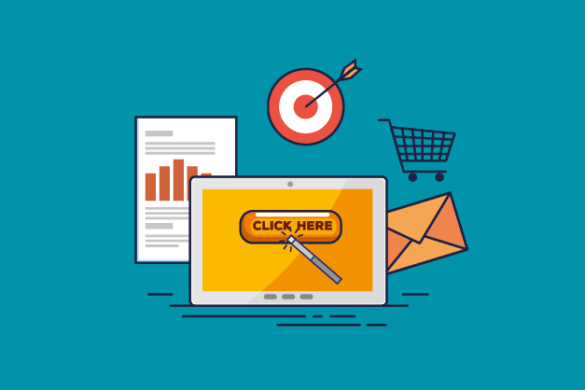Table of Contents
Above 10% is considered a decent conversion rate; some businesses achieve an average of 11.45%. Generally speaking, conversion rates for advertisers—from large corporations to smaller companies—range from two to five percent.
You gain a competitive advantage when your conversion rate is high. This blog post is exactly what you need if you’re wondering what makes a good conversion rate and how to increase your own!
What is a good conversion rate?
A solid conversion rate is greater than 10%; some companies have even achieved averages of 11.45%.
But what is the optimal conversion rate that your business ought to pursue? It would be best if you aimed for a higher conversion rate than the average, which is usually between 2% and 5%, in order to get a great one.
It is desirable to double or triple the average rate in order to secure a good conversion rate, which is why 10% is considered commendable.
Average conversion rates across various industries
If you want to know the conversion rates relevant to your industry, check out this table:
| Industry | Average Conversion Rate |
|---|---|
| B2B | 2.23% |
| Legal | 2.07% |
| Ecommerce | 1.84% |
| Finance | 5% |
Average conversion rate by channel
Have a look at this table if you want to increase your conversion rates through different channels. The average conversion rates for various channels, including Google, Bing, and Amazon, are outlined. It additionally comprises conversion rates from paid and organic sources. Take a look at that!
| Channel | Average Conversion Rate |
|---|---|
| Paid | 2.5% |
| Organic | 16% |
| Amazon | 10 – 14.5% |
| Amazon Advertising | 9% |
| Microsoft Advertising | 2.9% |
| Google Ads | 3.75% |
| Social Media | 0.71% |
Calculating your conversion rate
To calculate your conversion rate, simply divide the total number of conversions by the number of people who engaged with or clicked on your content.
Total Number of Conversions / Total Number of Clicks = Conversion Rate
How important is your conversion rate?
The significance of your conversion rate becomes more complex the more you consider what makes a good one. So is it my conversion rate that important? Both yes and no.
Like other digital marketing metrics, there are several ways to look at your conversion rate. This is because concentrating only on Conversion Rate Optimization (CRO) may occasionally result in a rise in unqualified leads.
A situation where increasing your conversion rate affects lead quality points out the importance of including lead quality in your CRO strategy, even though this isn’t always the case.
Improving the conversion rate of qualified leads—rather than just any lead—is the aim. Instead of focusing on any old customer in your market, try new things and conduct tests that target your ideal lead or shopper. Evaluate your results and investigate how qualified leads were affected in comparison to all other site users who participated in the experiment and interacted with your content.
You can maximize your conversion rate’s accuracy and significance by using these strategies:
1. Make unique landing pages for your ads
You should think about creating specific landing pages for each advertisement if you want to boost sales and conversions from your marketing campaigns.
Users arrive at a landing page after clicking on your advertisement. It should answer your audience’s informational needs and have a clear connection to the content of your ads.
Consider the following scenario: you are marketing vacation rentals in Nairobi, Kenya. When someone clicks on your advertisement, they expect to be taken to a page with vacation rentals in Nairobi. If they are instead taken to your homepage, they may not find what they are looking for and may decide not to buy.
Make sure your landing page meets the needs of the people who clicked on your advertisement and makes it as easy as possible for them to convert to maximize the effectiveness of your ads.
2. Conduct A/B tests
You must use A/B testing if you want to increase your conversion rate. With this technique, you can evaluate different iterations of a website element to find the one that converts better.
You can play around with different components, like website copy, design, and video content. Here are a few quick tips to get your first A/B test going:
- Choose which conversion behavior, such as purchases or sign-ups, you want to test.
- Find the part of your website where users are not converting, such as the email sign-up form or the shopping cart checkout.
- Identify a component that you want to test to resolve the issue, such as a new button or sign-up form with distinct questions.
- To assist you in conducting your experiment, purchase an A/B testing tool.
- Choose the duration of your test.
- After the test, examine your results to see which variation generated the most conversions, then make it visible to all website visitors.
3. Play around with various offers and calls to action (CTAs)
If you’re not getting enough website visitors to convert, it could be because your offer or call to action isn’t up to par. To increase conversions, your call to action (CTA) or offer should resonate with your audience and show that you have the product or solution they need.
To find out which messaging inspires action in your audience, test out different words and phrases. If your business, for example, offers a free trial of its software, you might try the following offers:
- “Try it now”
- “Start your free trial”
- “Get a complimentary 1-month trial”
Consider trying a different offer, like giving your team access to a free demo or walkthrough, if your free trial CTAs aren’t bringing in any conversions. This gives potential customers a chance to preview your software without committing.
4. Have a remarketing strategy
Using a remarketing strategy is another important recommendation we have for increasing conversions. You can target people who have interacted with your brand in the past through remarketing.
Remarketing works as a means to revive your customers’ interest in your business, whether they browsed your homepage, added products to their cart, or looked into your services. This will motivate them to come back and complete a purchase.
5. Keep your forms’ field count to a minimum
If you request too much information, some of your potential clients may give up on the conversion process.
Reduce the complexity of the process as much as you can to keep people interested and encourage them to complete their purchase or sign-up.
Make your forms straightforward by only requiring the information that is necessary to finish the transaction.
Sending your leads and customers a post-conversion email with a survey to complete is one way to get more information from them if you still want to.
Challenges in Achieving Optimal Conversion Rates
Achieving the best conversion rates is difficult even with concentrated efforts because of changing consumer preferences, market saturation, and fierce competition. Continuous testing, iteration, and adaptation, however, can assist companies in overcoming these obstacles and realizing unrealized potential.
To sum up, a good conversion rate is essential to digital success because it indicates a website’s capacity to captivate users and persuade them to take worthwhile actions. Businesses can improve their conversion rates and promote sustainable growth in an increasingly competitive market by comprehending the factors influencing conversion rates, benchmarking performance, and putting targeted optimization strategies into practice.
What is considered a good conversion rate?
A good conversion rate varies based on the type of business, the industry, and the objectives of the website. A conversion rate that is higher than the industry standard is generally regarded as good. While rates for other industries can differ significantly, a rate of 1.84% may be typical for e-commerce.
How often should I monitor my conversion rate data?
It’s best to keep an eye on conversion rate data on a weekly or monthly basis. On the other hand, the frequency might change according to the amount of traffic and how quickly the website is updated. Frequent monitoring facilitates trend identification and timely adjustment.







Add your first comment to this post